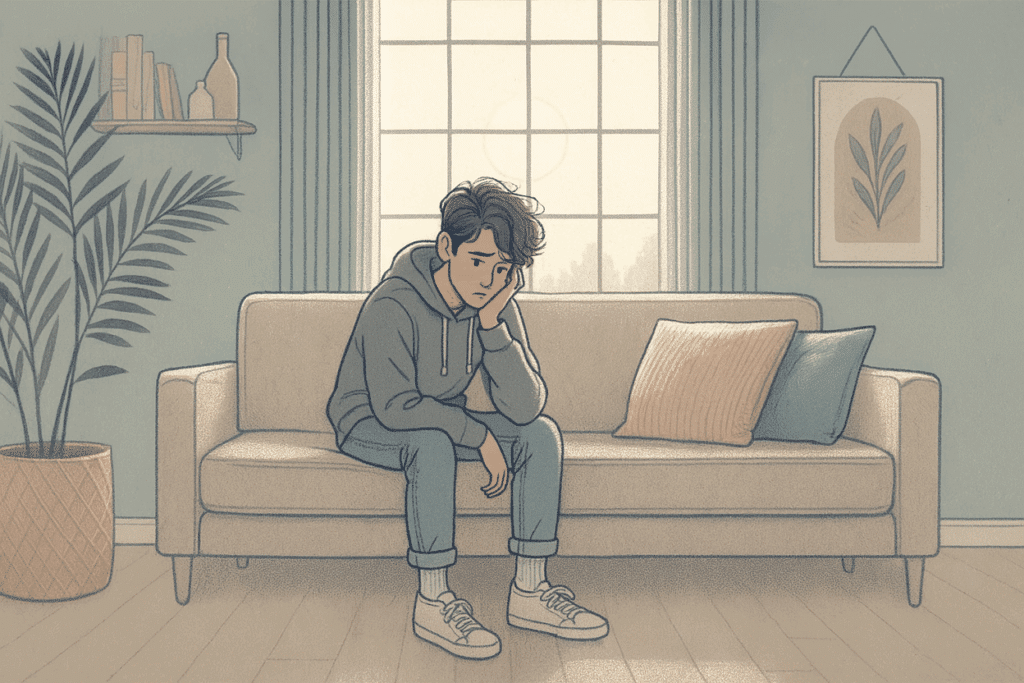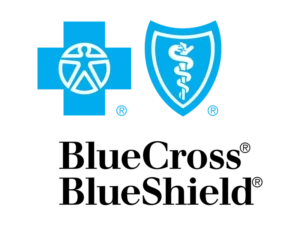Key Takeaways
- Persistent Depressive Disorder (PDD) in teens is characterized by a chronic depressed or irritable mood lasting at least one year.
- Approximately 12.8% of adolescents aged 12–17 experience either PDD or major depressive disorder, making it one of the most common mental health conditions affecting teens.
- Common warning signs include persistent sadness or irritability, changes in sleep patterns, loss of interest in previously enjoyed activities, declining academic performance, and social withdrawal.
- Teens with untreated PDD face higher risks of developing personality disorders, and other mental health challenges in adulthood.
- Mission Prep specializes in evidence-based and individualized treatment for adolescent PDD through Cognitive Behavioral Therapy (CBT), family involvement, and medication when appropriate.
Teen PDD Explained
Persistent Depressive Disorder (PDD), formerly known as dysthymia, is a chronic form of depression that significantly impacts a teen’s daily functioning, relationships, and overall quality of life.
While less severe than major depressive disorder in intensity, PDD’s persistent nature can be equally debilitating over time. Many teens with PDD describe feeling like they’ve “always been this way” or can’t remember ever feeling consistently happy.
The chronic nature of PDD means teens often develop unhealthy coping mechanisms or begin to view their depressed state as normal, making it harder to recognize there’s a problem. This internalization can lead to negative self-image and beliefs about their future potential.
PDD vs. Major Depression
While both PDD and Major Depressive Disorder (MDD) involve depressive symptoms, there are key differences between these conditions.
Major depression typically involves more severe symptoms that occur in distinct episodes lasting at least two weeks, whereas PDD involves less severe but more chronic symptoms lasting at least one year in adolescents.
Many teens with PDD describe their experience as feeling constantly “down” or “gray” rather than experiencing the more intense emotional pain often reported with major depression.
Another important distinction is that teens with PDD may have brief periods where they feel better or even normal, but these improvements typically last only a few days before the depressive symptoms return.
This chronic pattern can make PDD harder to identify than the more obvious episodes of major depression. Some adolescents may experience both conditions simultaneously, which requires specialized treatment approaches.
Prevalence Among Teens
Depression is one of the most common mental health disorders affecting adolescents today. According to research, approximately 12.8% of teens aged 12–17 experience either persistent depressive disorder or major depressive disorder in the US.
Girls are also more likely than boys to be diagnosed with PDD during adolescence, though this may partly reflect differences in how symptoms present or are reported.
The condition often begins insidiously in early to mid-adolescence but can go undiagnosed for years as symptoms are mistaken for teenage moodiness or personality traits.
Mission Prep Healthcare specializes in mental health treatment for teens aged 12-17, offering residential and outpatient programs for anxiety, depression, trauma, and mood disorders. Our therapies include CBT, DBT, EMDR, and TMS, tailored to each adolescent’s needs.
With a structured, supportive environment, we integrate academic support and family involvement to promote lasting recovery. Our goal is to help teens build resilience and regain confidence in their future.
Warning Signs of PDD
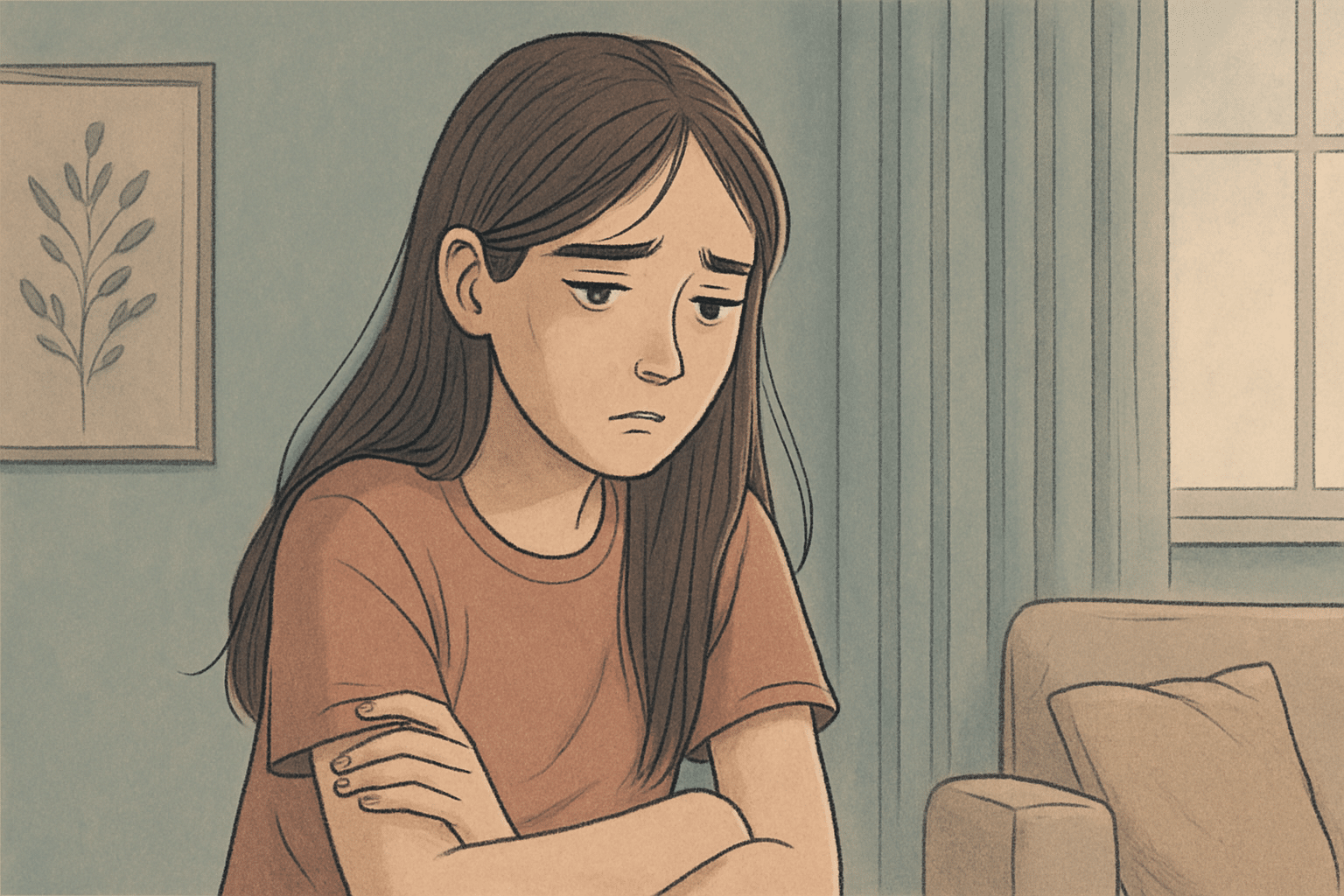
Recognizing persistent depressive disorder in teens requires careful attention to subtle but consistent patterns of mood and behavior.
Common Symptoms
The most consistent symptom of PDD in teens is a persistently depressed or irritable mood. Unlike adults who often report feeling sad, teenagers with depression frequently express their emotional distress through irritability, anger, or sensitivity to criticism. They may seem constantly annoyed, easily frustrated, or quick to snap at family members. This irritability tends to be more pervasive and less situational than typical teenage moodiness.
Fatigue and low energy are also hallmark symptoms of PDD in adolescents. Teens with this condition often struggle to get out of bed, complete daily tasks, or participate in activities that require sustained effort. They may feel tired despite adequate sleep or describe a heaviness or lack of motivation that makes even simple tasks feel overwhelming.
Persistent changes in appetite and eating habits are common as well, with some teens losing interest in food and others turning to emotional eating.
Behavioral Changes
One of the most noticeable behavioral changes in teens with PDD is a gradual loss of interest in previously enjoyed activities. A teen who once enthusiastically participated in sports, music, or social clubs may begin making excuses to avoid these activities or participate with noticeably less engagement.
This withdrawal from pleasurable activities, known as anhedonia, is a core feature of depressive disorders and significantly impacts quality of life.
Academic Impact
School performance often suffers significantly when a teen develops PDD. The cognitive symptoms of depression, such as difficulty concentrating, memory problems, and slowed thinking, directly interfere with learning and academic achievement.
A previously successful student may begin missing assignments, struggling with tests, or failing to participate in class discussions. These changes can be gradual enough that they’re attributed to increasing academic demands rather than recognized as symptoms of depression.
Diagnostic Process for PDD
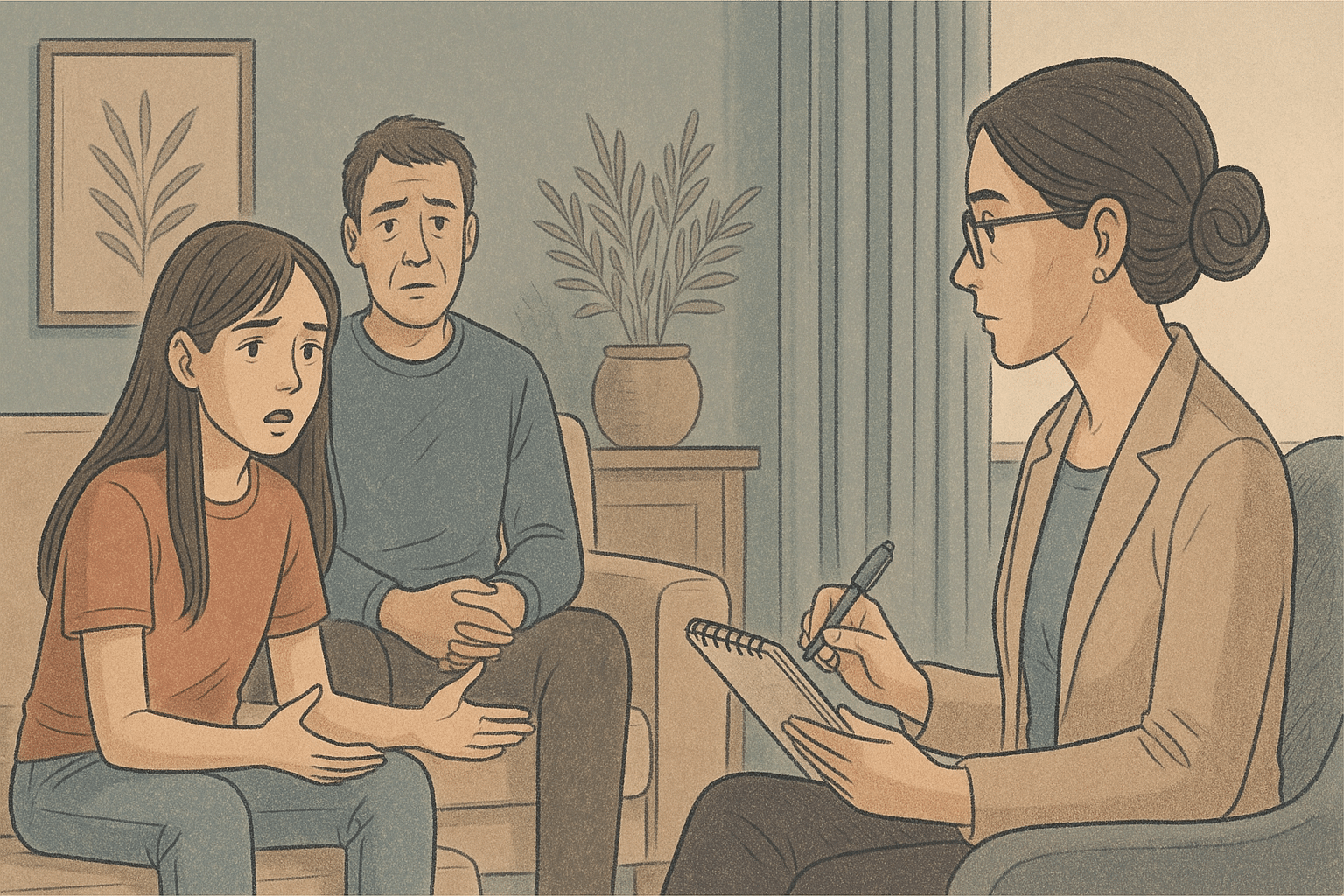
Diagnosing PDD involves medical evaluation, psychological assessment and family history review.
Medical Evaluation
The diagnostic process typically begins with a complete medical evaluation to rule out physical conditions that can mimic or contribute to depressive symptoms.
Certain medical conditions like thyroid disorders, anemia, vitamin deficiencies, or chronic fatigue syndrome can present with symptoms similar to depression.
The doctor will likely perform a physical examination and may order blood tests to check for these potential underlying issues.
Psychological Assessment
A comprehensive psychological evaluation conducted by a mental health professional forms the cornerstone of PDD diagnosis. This assessment involves detailed interviews about mood patterns, symptoms duration, and functional impairment over time.
The clinician will use standardized diagnostic criteria and may employ depression rating scales to determine if symptoms meet the threshold for PDD, which requires depressive symptoms to be present for at least one year in adolescents.
Family & Social History Review
Mental health professionals conduct thorough evaluations of family psychiatric history, social relationships, and environmental factors that may contribute to or maintain depressive symptoms.
This process includes interviewing both the teen and their family members to understand relationship patterns, academic performance, social functioning, and any traumatic experiences.
Understanding these contextual factors helps clinicians differentiate PDD from situational depression and develop more targeted treatment approaches.
Treatment Options for PDD
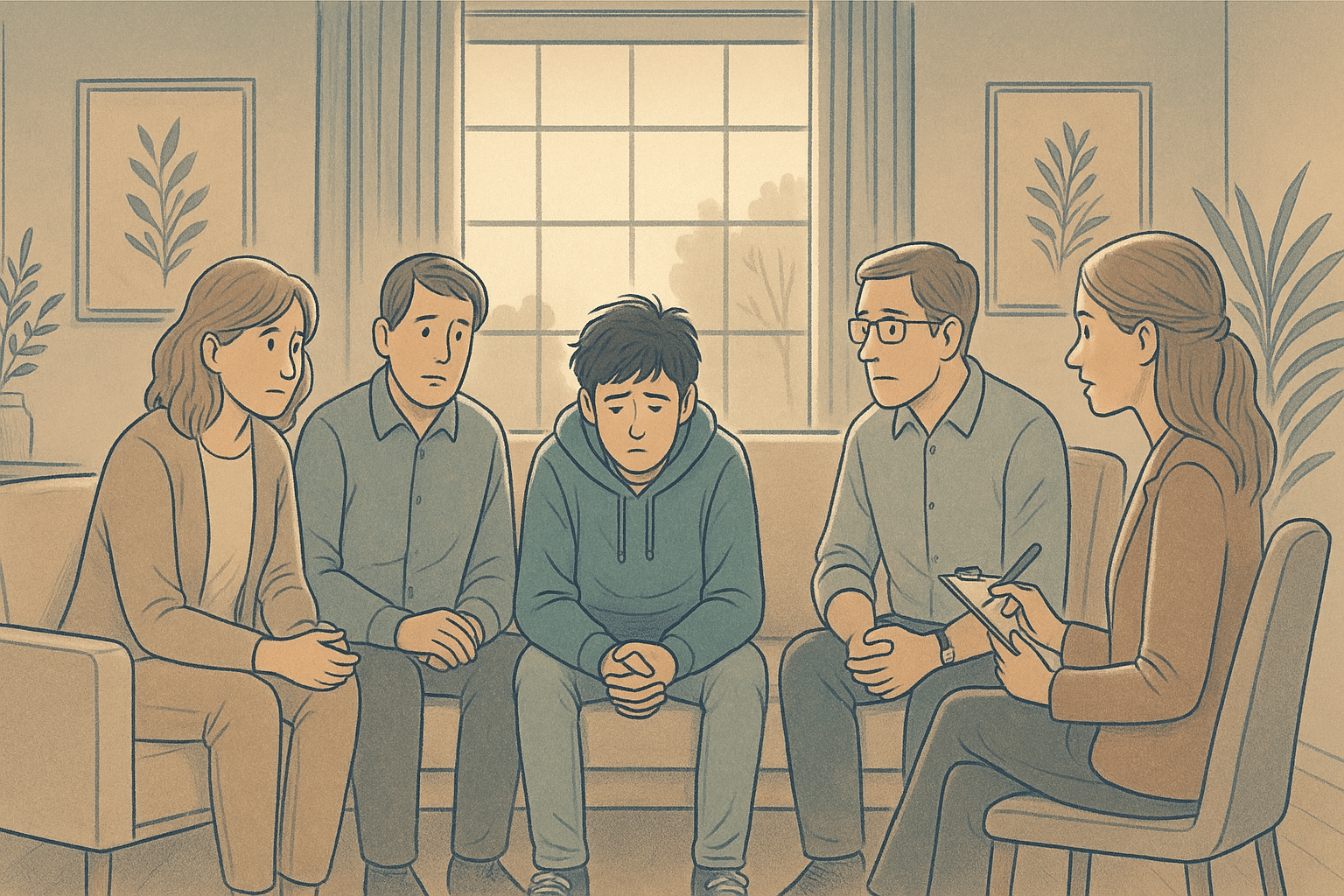
While managing PDD symptoms can be overwhelming, teens can regain happiness and improve their quality of life with the right intervention.
Psychotherapy
Cognitive Behavioral Therapy (CBT) and Interpersonal Therapy are considered first-line treatments for adolescent PDD.
These evidence-based approaches help teens identify and modify negative thought patterns, develop healthy coping strategies, and improve relationship skills.
Therapy sessions typically focus on building emotional regulation techniques and addressing the chronic nature of symptoms through structured, goal-oriented interventions.
Antidepressant Medications
Selective Serotonin Reuptake Inhibitors like fluoxetine and sertraline may be prescribed for adolescents with PDD when symptoms significantly impair daily functioning. These medications work by increasing serotonin levels in the brain, which can help stabilize mood over time.
Close monitoring is essential, particularly in the first few months of treatment, as antidepressants can initially increase suicide risk in some teenagers.
Lifestyle Modifications & Support
Comprehensive treatment includes establishing regular sleep schedules, encouraging physical activity, and implementing stress management techniques. Family therapy and support groups can provide additional resources for both teens and parents managing PDD.
These interventions address the social and environmental factors that often perpetuate chronic depression while building a strong support network for long-term recovery.
Get Comprehensive PDD Treatment at Mission Prep
PDD in teens requires specialized understanding and evidence-based treatment approaches that address the unique challenges of adolescent development.

At Mission Prep, we provide a safe space for comprehensive intervention that goes beyond symptom management to build lasting resilience and emotional regulation skills.
Our specialized approach at Mission Prep to treating PDD combines thorough diagnostic assessment with individualized treatment planning that addresses each teen’s specific symptoms, risk factors, and strengths.
Through evidence-based therapies like CBT, family involvement, and carefully monitored medication when appropriate, we help teens develop the tools they need to manage their symptoms and thrive. Our comprehensive approach addresses not just the depression itself but also its impact on academic performance, social relationships, and family dynamics.
With proper treatment, adolescents with PDD show significant improvement, and many develop greater emotional intelligence and resilience than their peers. Early intervention at Mission Prep can provide the specialized care needed for lasting recovery and a brighter future.
Frequently Asked Questions (FAQ)
Can PDD go away on its own?
PDD rarely resolves completely without treatment. The chronic nature of PDD means that symptoms typically persist or worsen over time without appropriate intervention.
Unlike temporary sadness or situational depression that may improve as circumstances change, PDD involves persistent changes in brain function and thought patterns that generally require professional treatment to address.
Is medication necessary for teen PDD?
Medication is not always necessary but can be an important component of treatment for many teens with persistent depressive disorder. The decision to use medication should be made based on the teen’s symptom severity, impact on functioning, response to psychotherapy alone, and the presence of co-occurring conditions.
For teens with moderate to severe symptoms or those who don’t respond adequately to therapy alone, medication can provide significant relief and create a foundation for therapeutic work.
How can I tell if my teen is just moody or has PDD?
Distinguishing between normal teenage moodiness and persistent depressive disorder centers on duration, persistence, and impact.
Normal adolescent mood swings typically respond to positive events, vary in intensity, and don’t significantly interfere with functioning across multiple areas of life.
A teen experiencing typical moodiness might be irritable after a disappointing day but bounce back when spending time with friends or engaging in favorite activities.
By contrast, PDD involves a pervasive negative mood that persists regardless of circumstances and significantly impacts academic performance, social relationships, and family functioning.
What’s the success rate of PDD treatment?
Treatment for persistent depressive disorder is generally effective, with many adolescents showing significant improvement with appropriate intervention.
The most successful approaches typically combine evidence-based psychotherapy (particularly cognitive-behavioral therapy) with medication when indicated.
How does Mission Prep’s approach to treating PDD differ from other providers?
Mission Prep specializes in evidence-based treatment for adolescent PDD through individualized care plans that combine CBT, family involvement, and medication when appropriate.
Our approach includes thorough assessment considering biological, psychological, and social factors; trauma-informed care; and focus on building long-term resilience and coping skills.
We emphasize early intervention and create supportive environments where teens can develop emotional regulation abilities and healthy thinking patterns for lasting recovery.


